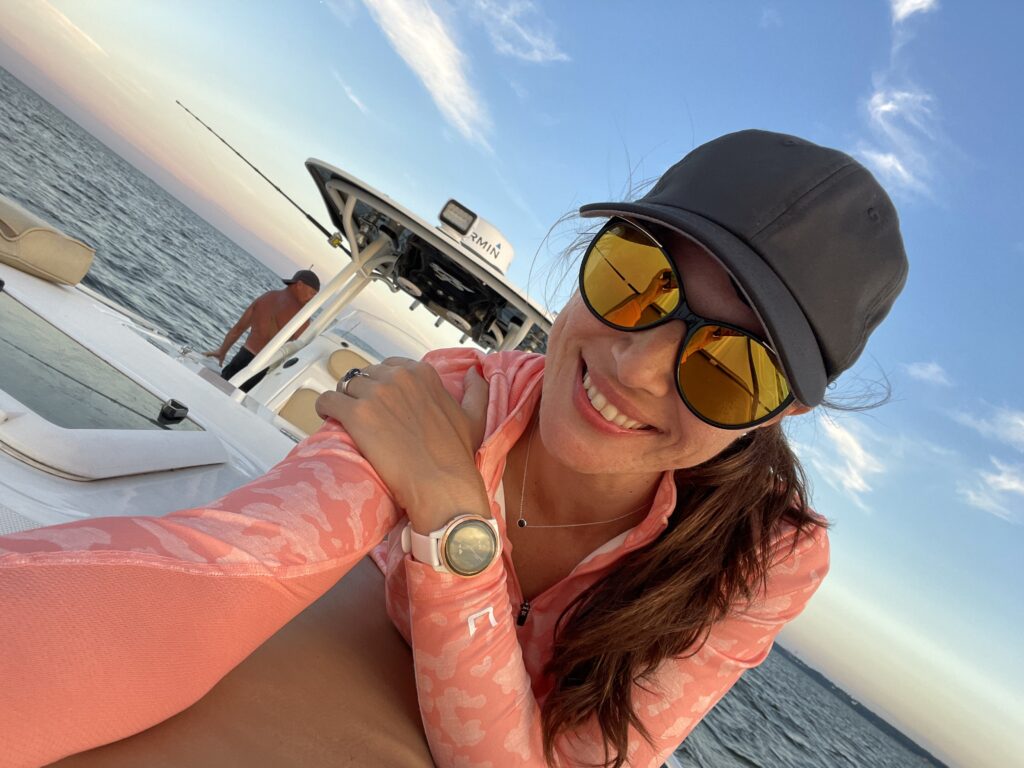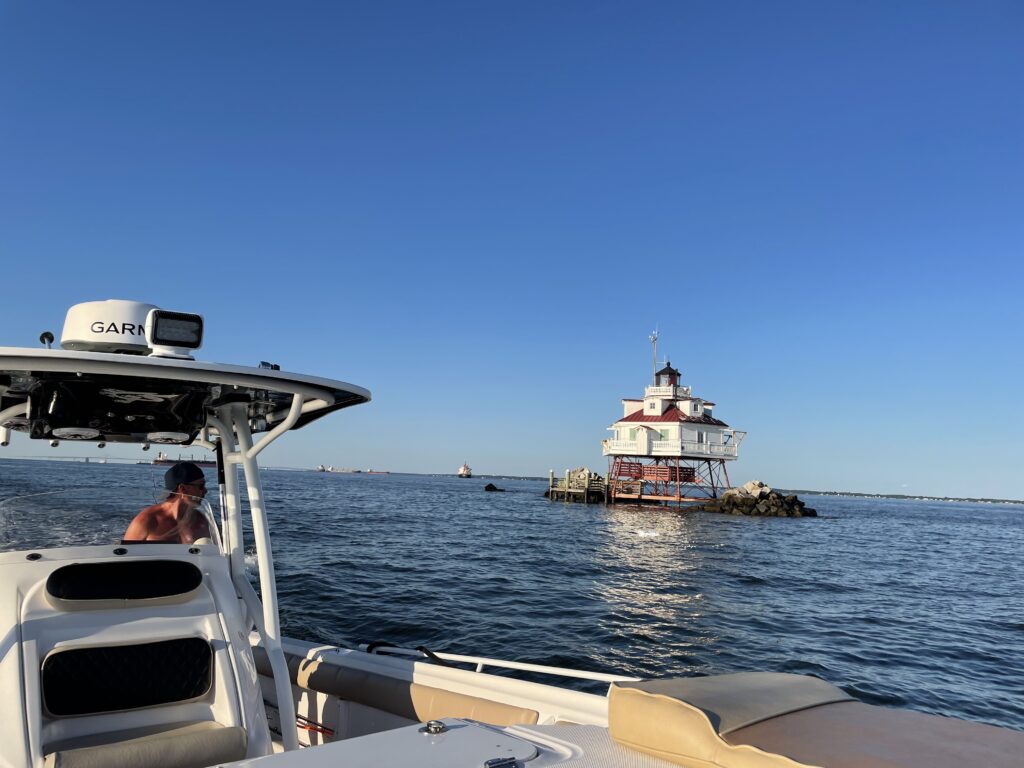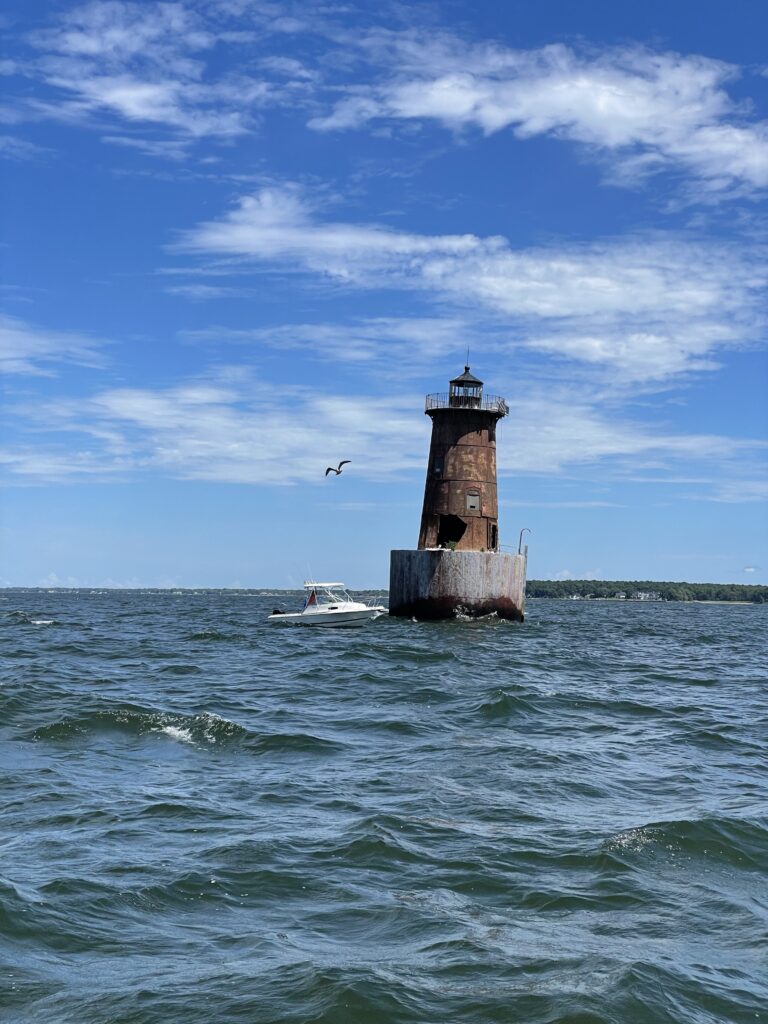Falling in Love with the Chesapeake Bay
In the heart of the Eastern Shore of Maryland, where the land meets the Chesapeake Bay, lies a story of discovery, love, and connection with nature. I had always been drawn to the water, but it wasn’t until I moved to Southern Maryland that my passion for being on the water blossomed.
I grew up in the capital city of Bulgaria, Sofia, surrounded by concrete and noise. For the last 17 years, I have been living in Alexandria, Virginia, where the noise is even louder. The idea of living near the water had always been a distant dream. I spent my childhood hiking in the mountains every summer and thought for sure I preferred the higher elevation.

When I met Charlie a couple of years ago, I knew nothing about boating or fishing. During my first weekend in Chesapeake Beach, we explored the marina. As I walked along the docks, I was mesmerized by the sight of sailboats gliding gracefully across the water and fishermen hauling in their catches. The salty breeze and the sound of seagulls overhead filled me with a sense of calm I had never experienced before.
Determined to show me his world, Charlie took me fishing almost every weekend on the boat. As I learned the basics of navigation, safety, and boat handling, I eagerly soaked up every bit of knowledge he shared. I found myself watching him reel in fish with a mix of admiration and curiosity. Having never fished myself, I thought this boring game of waiting for a bite was all there was to fishing. Boy, was I wrong about that…

Fishing quickly became a new hobby for me, and a good workout. Each catch filled me with a sense of accomplishment and joy. Whether it was a feisty rockfish, a cobia, or some rusty old crab pot I got to reel in, the mystery of what’s waiting on the other side of the line is captivating. As we navigated the waters, feeling the gentle rocking of the boat beneath us, we felt a deep sense of freedom and exhilaration. The vastness of the bay stretched out before us, its waters shimmering in the sunlight.
As the seasons changed, so did the bay. We marveled at the beauty of the fall foliage reflected in the water. But it wasn’t just the natural beauty of the Chesapeake Bay that captivated me. It was also the sense of community among fellow boaters and fishermen. Whether swapping stories at the marina or lending a hand to a neighbor in need, you can feel a strong bond with those who share the love for the bay. Every time we waved to another vessel we passed, we felt connected.



Each moment spent on the boat deepened my love and appreciation for this majestic body of water. Early mornings became an excitement, as we packed our coolers to head out. We spent the evenings talking and laughing, as we sailed back to shore. We often bring friends onboard and visit some of Chesapeake Bay’s famous Dock Bars. You can find a map with the full list here.
Whether we watch the sunrise or the sunset, as we look out at the bay, with its ever-changing tides and timeless beauty, I knew that I had found my true home.
Water Safety Rules
As a certified lifeguard and a Water Safety Instructor, I can’t complete this post without pointing out some general safety guidelines according to the Red Cross.
- Know your limitations, including physical fitness, and medical condition.
- Learn how to perform these 5 skills:
- Enter water that’s over your head, then return to the surface.
- Float or tread water for at least 1 minute.
- Turn over and turn around in the water.
- Swim at least 25 yards.
- Exit the water
- Never swim alone; swim with lifeguards and/or water watchers present.
- Always wear a U.S. Coast Guard-approved life jacket appropriate for your weight while boating, regardless of swimming skills.
- Swim sober and always swim with a buddy.
- Understand the dangers of hyperventilation and hypoxic blackout.
- Know how to call for help.
- Knowing ways to safely assist a drowning person, such as “reach or throw, don’t go”.
- Knowing CPR and first aid.
- Understand and adjust for the unique risks of the water environment you are in, such as:
- River currents.
- Ocean rip currents.
- Water temperature.
- Shallow or unclear water.
- Underwater hazards, such as vegetation and animals.
- Know What to Do in an Emergency
- If a child is missing, check the water first: seconds count in preventing death or disability!
- Alert the lifeguard, if one is present.
- Recognize the signs of someone in trouble and shout for help. A swimmer needs immediate help if they:
- Are not making forward progress in the water.
- Are vertical in the water but unable to move or tread water.
- Are motionless and face down in the water.
- Rescue and remove the person from the water (without putting yourself in danger).
- Ask someone to call emergency medical services (EMS). If alone, give 2 minutes of care, then call EMS.
- Begin rescue breathing and CPR.
- Use an AED if available and transfer care to advanced life support.
If you’re looking to get a new and solid fishing rod – click here.



